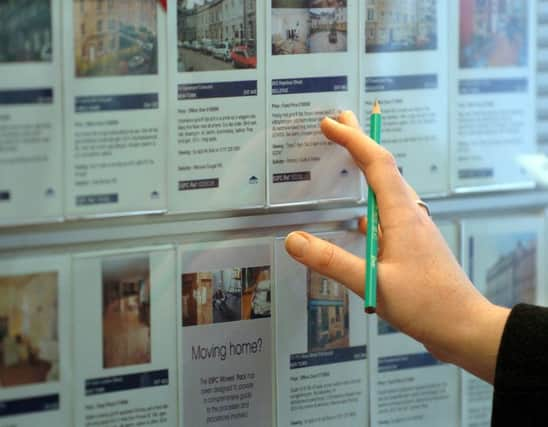Tips on how to save for your first mortgage deposit


The average property price in Scotland was recorded as £180,892 in May this year - a 10 per cent rise on 2014.
With wages stagnating and costs soaring, it can be a daunting time for those looking to buy their first home.
Advertisement
Hide AdAdvertisement
Hide AdProperty experts predict that 250,000 new homes are needed each year in the UK just to taper price growth.
With that kind of building programme unlikely to happen any time soon, saving the deposit required for a mortgage is the only option for many.
So what are the first steps on the road to owning your first home?
Assess your options
The average first-time buyer puts down a 20 per cent deposit on their first home, according to the impartial Money Advice Service. That could mean saving £20,000 or more. There is an increasing supply of 90 per cent mortgages available, but they are still harder to obtain. To reduce the amount of time they spend saving, many people arrange an informal loan from their parents or other relatives. But that’s not an option for most, so it’s crucial you investigate the government-backed Help to Buy or other shared equity schemes for new build homes. Typically, a deposit of only 5 per cent is required and the government or developer lends you the rest of the deposit.
Investigate property prices
Do your research on where you want to live, what kind of home best suits your needs, and how much that is likely to cost. It’s vital you have a realistic target to work towards. What are the average house prices in the area? How much are they rising year-on-year? Would it make financial sense to live slightly further afield? There are many questions to answer before you commit to living in one particular community.
Work out how much you can save each month
Assess your monthly spending in an honest manner and calculate what you can afford to save. It’s important to be realistic. To reach £10,000 in three years for example, you will need to put away £265 each month. If you set an amount you are comfortable with you are more likely to stick to your plan.
Decide where to stash your cash
Before you start saving, you’ll need somewhere to keep it. Shoeboxes or biscuit tins are not advised, so you’ll need a separate savings account. Instant Access Accounts (ISAs) are popular, but if you are serious about saving consider an account that offers more restricted access but a higher rate of interest. There are several price comparison websites which detail the best savings accounts suited to your needs.
Get started
Once you’ve begun saving it’s important to review your account at least once or twice a year to ensure you’re still getting the best rate of interest available.